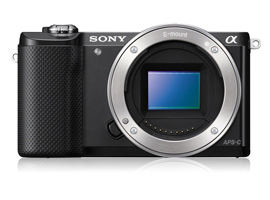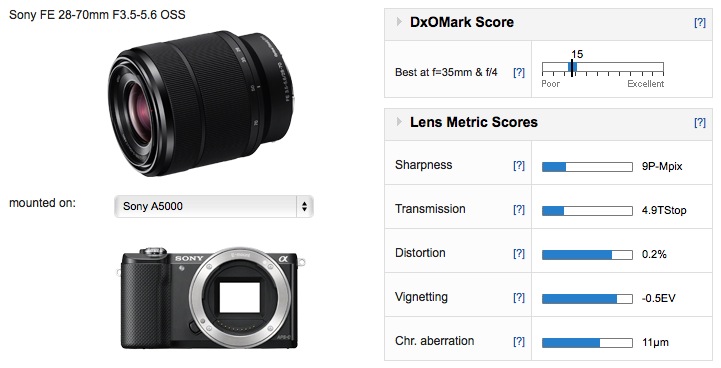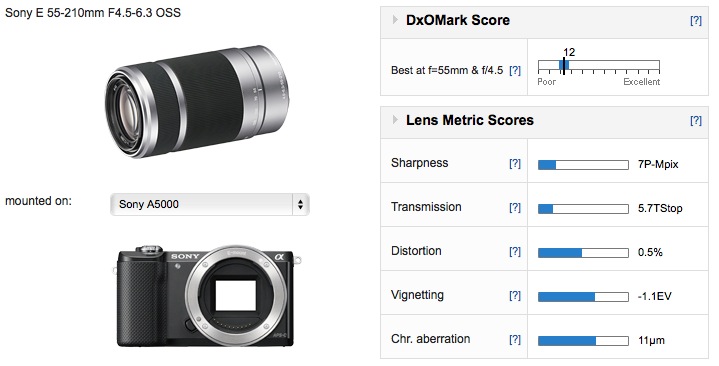Introduction
Sony like rival makers continue to miniaturize models and the new A5000 is the smallest and lightest at just 9.4 oz (269g) with the battery in the maker’s current line up. At $499 including the 16-50mm collapsible kit zoom it’s a modestly priced model that may appeal to enthusiasts on a budget. Housed inside the compact form factor is a 20-Mpix APS-C CMOS sensor along with the firm’s Bionz X level processor which is capable of boosting sensitivity up to ISO16,000 and capturing Full HD video at up 50/60fps.
A 3.5 fps burst rate is a little pedestrian compared to the 10 fps of the NEX-5T or NEX-6 but this isn’t quite aimed at the same audience. Nevertheless, while it lacks some high-end features such as Hybrid AF and the additional versatility of the Multi-Interface shoe, it has a useful 3.0” tilting LCD monitor (albeit just 460k-dot) and built-in WiFi with NFC connectivity for both convenient sharing and image capture.
The A5000 was the first new model to eschew the NEX moniker in favor of the Alpha branding but it’s compatible with a steadily expanding line-up of lenses from the firm, currently standing at 22 when including the full-frame FE models, or 26 with the current Sigma DN and Tamron models. We’ve tested the optical quality of over 20 different lenses on the camera to see which of those models best suit your needs and which, if any, you should try to avoid.
Best zoom lenses for the Sony A5000
With a DxOMark lens score of 17 points and a convincing lead over the model in second place the best-performing lens on the Sony A5000 is the Sony FE 70-200mm f4 G OSS. Telephoto zooms are, arguably, the most useful of their type with standard and ultra-wide models more easily replaced by primes.
The 70-200mm f4 is a full-frame model so on a cropped model like the A5000 it has the equivalent field of view as a 100-300mm or thereabouts.
 |
 |
 |
 |
| Sony FE 70-200mm F4 G OSS | 1498 | 17 | 12 |
| Sony FE 28-70mm F3.5-5.6 OSS | 500 | 15 | 9 |
| Sony FE Carl Zeiss Vario-Tessar T* 24-70mm F4 ZA OSS | 1200 | 15 | 7 |
| Sony E 10-18mm f/4 | 850 | 14 | 8 |
| Sony E18-200mm f/3.5-6.3 | 800 | 12 | 7 |
| Sony E 55-210mm F4.5-6.3 OSS | 350 | 12 | 7 |
| Sony E 16-50mm f/3.5-5.6 | 350 | 12 | 7 |
| Sony E 18-200mm f/3.5-6.3 LE | 850 | 11 | 5 |
| Tamron 18-200mm F/3.5-6.3 Di III VC Sony E | 739 | 10 | 5 |
Although it would serve double duty on one the three A7 models, it’s a still an expensive option given the relatively affordable price of the camera. Although not in the same league optically, the earlier Sony E18-200mm f3.5-6.3 could be a worthwhile option, or perhaps better still the stabilized E55-210mm f4.5-6.3 at just $350 would a better fit, particularly if the A5000 was purchased with the E16-50mm f3.5-5.6. Marginally faster but with better image quality is the Sony FE28-70mm f3.5-5.6 OSS, in second place overall. As the equivalent to a 35-105mm it lacks the reach of those models but it’s a good performer and at $500 it’s a good investment as it can also be used on full-frame models.
Best standard zoom under $500
Although there aren’t too many models to choose from in this category, we’re going to recommend the full-frame FE28-70mm f3.5-5.6 OSS, if only because it’s something of a surprise compared to the Zeiss 24-70mm f4 and if you have the A5000, you’ll likely already have the 16-50mm. This stabilized lens isn’t cheap exactly, but it compares favorably to the Zeiss in performance – it even outperforms the pricier model at the longer end of zoom range at least at the initial aperture (f5.6). By f8, however, the Zeiss is sharp across much of the field, unlike the Sony which remains sharp only in the center. Sharpness at the shorter end is better but it never really extends to the corners of the frame. Distortion and vignetting are at similar levels but the Zeiss has better control of chromatic aberration, particularly at the shorter focal lengths. Still it’s a good performer overall.
Best telephoto zoom under $400
Although the 18-200mm f3.5-6.3 has a very useful range, this lens is much more affordable and it has the added benefit of stabilization – an essential feature at the longer end of the zoom range where the initial aperture drops to f6.3 (actually T6.9). Wide-open performance at 210mm is similar though this model has slightly softer corners still over the more expensive model.
At the shorter focal lengths the 55-210mm is the better performer – it’s sharper in the centers and has slightly better sharpness across the field when stopped down. Above 135mm this model also has much lower distortion and it’s especially noticeable at 200mm however the more expensive model has better control of vignetting and chromatic aberration, although in fairness levels are high at the shorter focal lengths. At the telephoto settings, the 55-210mm has lower CA than its pricier sibling
If you have a Sony A5000 and a favorite lens, we would very much like to hear from you. Please leave a comment below, stating what lens it is and why you like it.





DXOMARK encourages its readers to share comments on the articles. To read or post comments, Disqus cookies are required. Change your Cookies Preferences and read more about our Comment Policy.